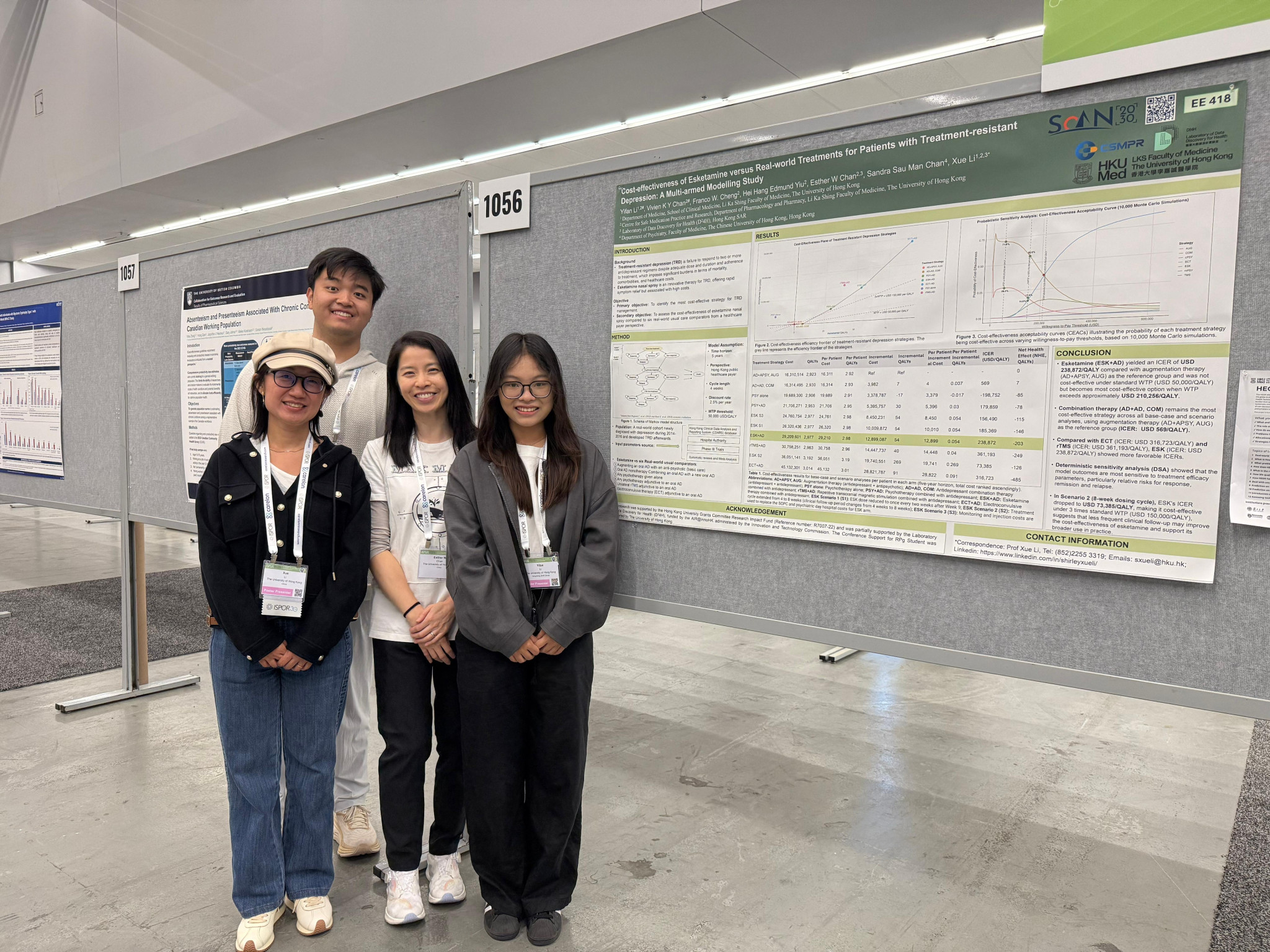
Cost-effectiveness of Esketamine versus Real-world Treatments for Patients with Treatment-resistant Depression: A Multi-armed Modelling Study
Yifan Li1,2#, Vivien K Y Chan2#, Franco W. Cheng2, Hei Hang Edmund Yiu2, Esther W Chan2,3, Sandra Sau Man Chan4, Xue Li1,2,3*
ABSTRACT
Background: Treatment-resistant depression (TRD) is the failure to respond to at least two antidepressant (AD) regimens administered at an effective dose for a sufficient duration, which poses substantial clinical challenges and economic burden on healthcare systems. Esketamine nasal spray is a novel rapid-onset treatment for TRD, but current economic studies only compared it with unrealistic comparators such as AD monotherapy. This study aims to evaluate the cost-effectiveness of esketamine and other six real-world usual treatment strategies and identify the most cost-effective option(s) for TRD from the healthcare payer’s perspective.
Methods: We developed a Markov cohort model to estimate the incremental cost-effectiveness ratio (ICER) in cost per quality-adjusted life-year (QALY) gained for six third-line treatment strategies: 1) esketamine nasal spray plus oral antidepressants (AD), 2) Combination therapy (combining an oral AD with another antidepressant), 3) Psychotherapy alone, 4) Psychotherapy adjunctive to oral AD, 5) Unilateral repetitive Transcranial Magnetic Stimulation (rTMS) adjunctive to oral AD, and 6) Electroconvulsive Therapy (ECT) adjunctive to oral AD, compared with reference group augmentation therapy (augmenting an oral AD with an anti-psychotic). The model simulated a hypothetical cohort of 1000 TRD patients aged 18 years and older in Hong Kong, with a 4-week cycle length over a 5-year time period. Additional scenarios of esketamine dose reduction, varying cycle length and reallocation of cost components in subsequent lines were assumed. A 2.5% annual discount rate were applied. Cost-effectiveness was assessed using a willingness-to-pay (WTP) threshold of USD 50,000 per QALY. Deterministic and probabilistic sensitivity analyses were performed to assess the robustness of model outcomes.
Results: In the base-case analysis, the ICER of Esketamine plus AD (USD 238,872/QALY) indicated that it was not cost-effective compared to augmentation strategy (reference group) under the standard WTP threshold, but it remained more favorable than ECT (USD 316,723/QALY) and rTMS (USD 361,193/QALY). Among all options, the combination strategy remained the most cost-effective strategy under the standard WTP threshold, with the ICER of USD 569/QALY. In the scenario analysis, extending the treatment cycle of esketamine from 4 to 8 weeks significantly improved its cost-effectiveness, reducing the ICER to USD 73,386/QALY falling within three times the standard WTP threshold (USD 150,000 per QALY).
Interpretation: In short-term, esketamine was not cost-effective under the standard WTP threshold but showed more favorable value than ECT and rTMS. These findings support the potential role of esketamine for selected patients and underscore the importance of tailored approaches and long-term monitoring in TRD management.
1 Department of Medicine, School of Clinical Medicine, Li Ka Shing Faculty of Medicine, The University of Hong Kong
2 Centre for Safe Medication Practice and Research, Department of Pharmacology and Pharmacy, Li Ka Shing Faculty of Medicine, The University of Hong Kong
3 Laboratory of Data Discovery for Health (D24H), Hong Kong SAR
4 Department of Psychiatry, Faculty of Medicine, The Chinese University of Hong Kong, Hong Kong

